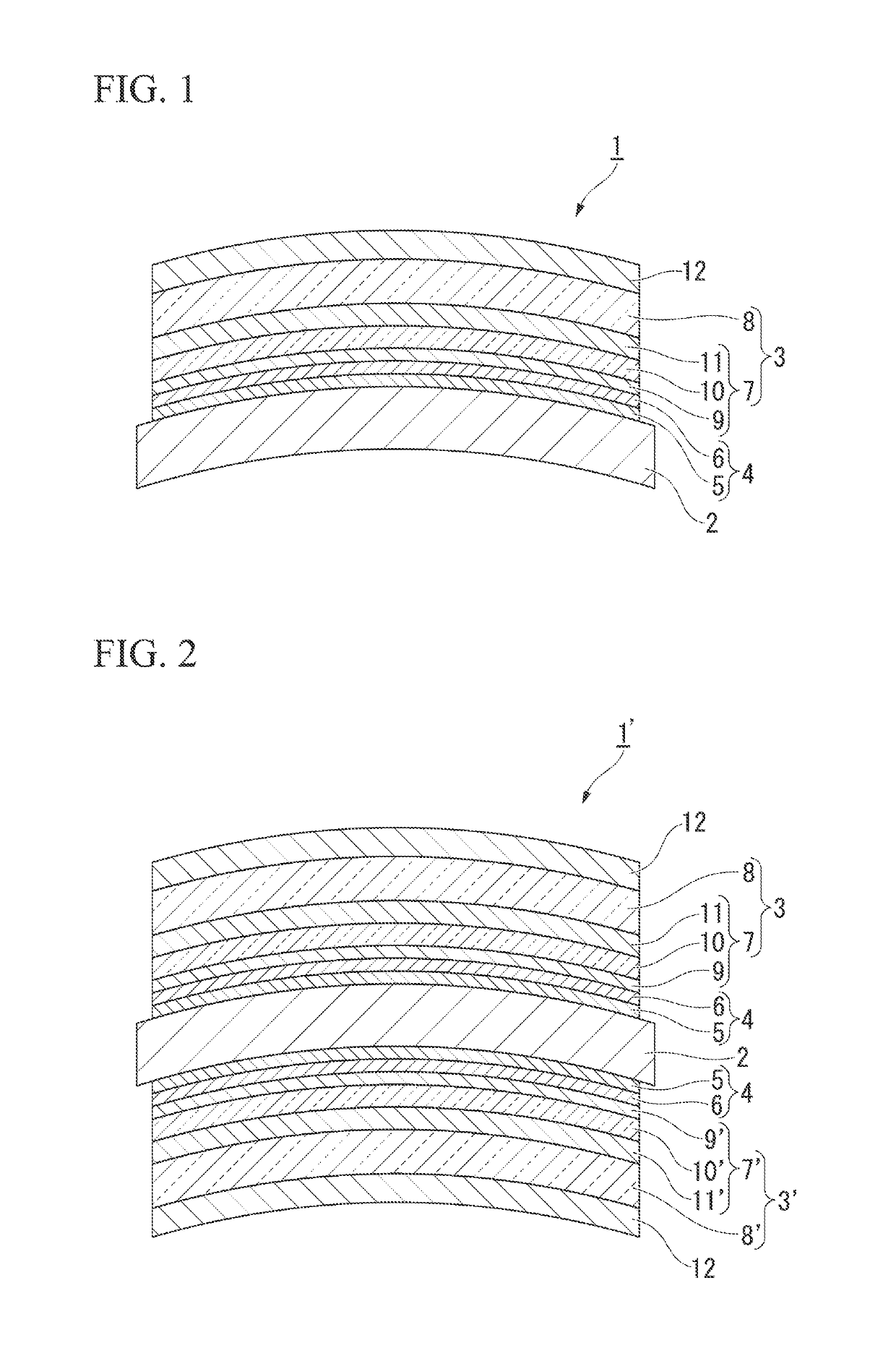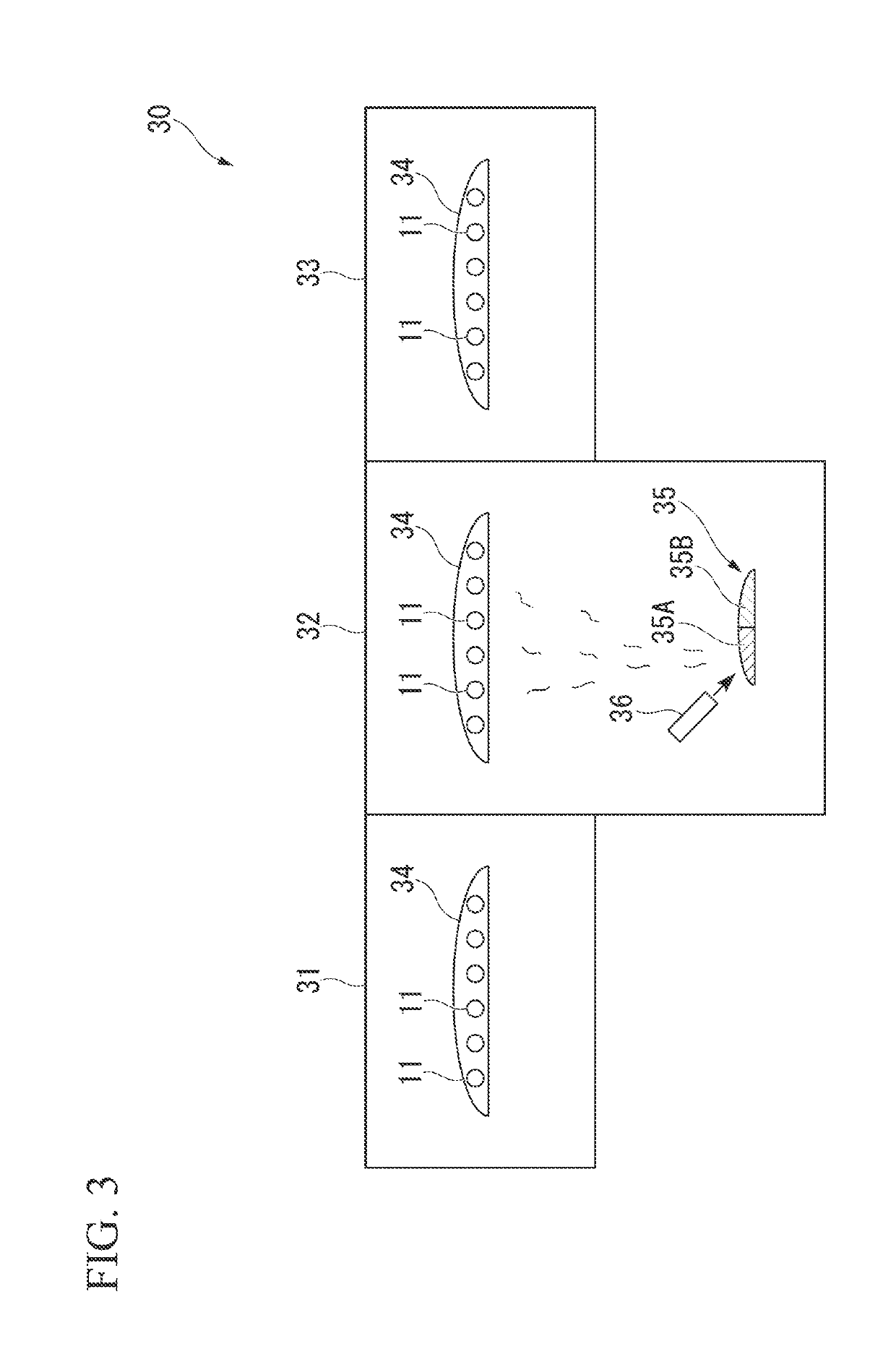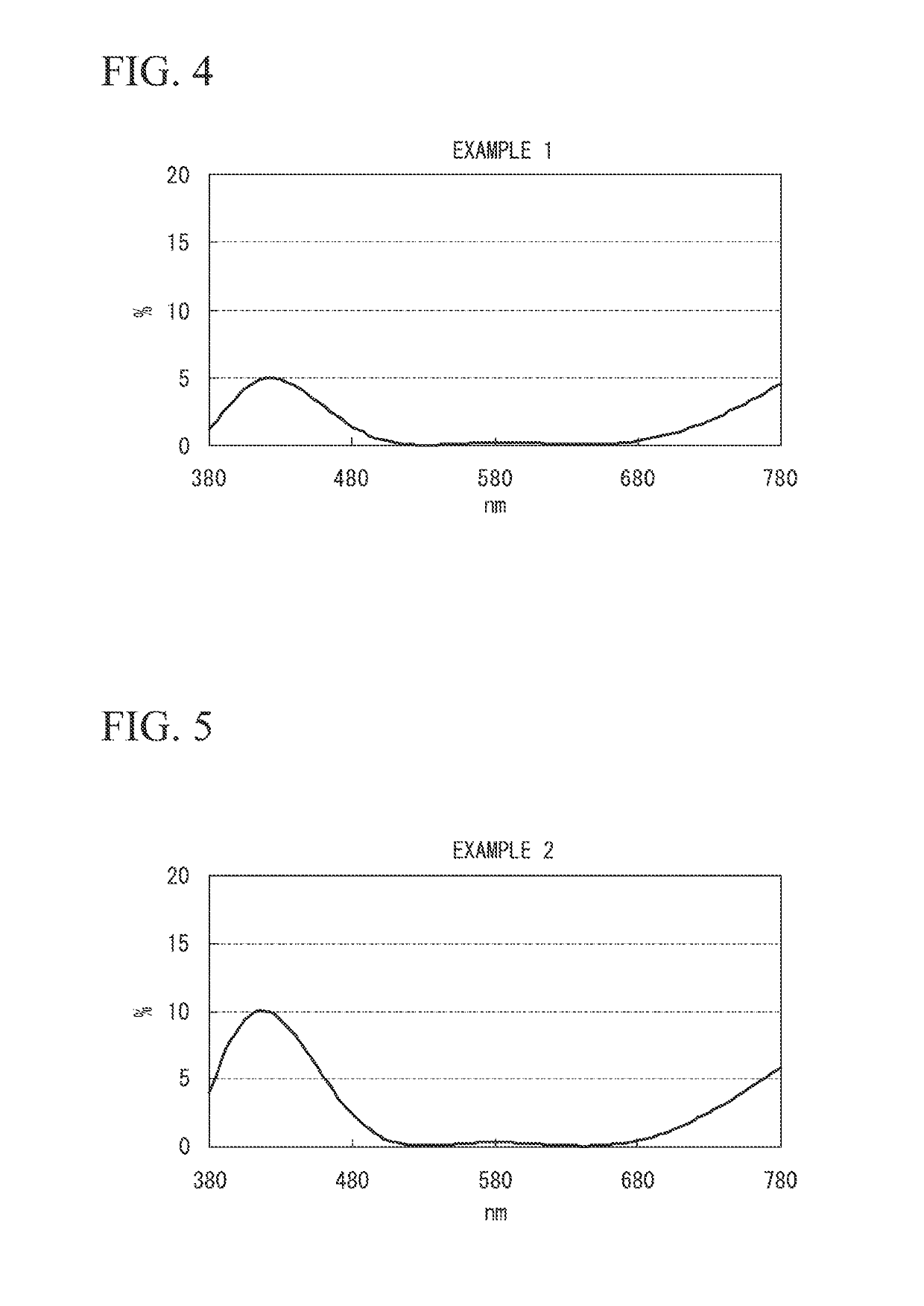Optical component and method of manufacturing the same
a technology of optical components and optical components, applied in the field of optical components, can solve the problems of low reflection characteristic over the entire visible region, impact on the retina, deterioration of visibility, etc., and achieve the effect of improving visibility, adhesion, and effective antiglare
- Summary
- Abstract
- Description
- Claims
- Application Information
AI Technical Summary
Benefits of technology
Problems solved by technology
Method used
Image
Examples
examples
[0100]Hereinafter, examples of the embodiments of the invention will be described in more detail, but the invention is not limited to the following examples.
[0101]Test 1
[0102]On a urethane-based synthetic resin substrate, a silicon-based hard coating having a refractive index of 1.67 and a primer coating having a refractive index of 1.67 were prepared by thermal curing, and film formation was performed by a vacuum deposition method as follows.
example 1
[0103]Convex Surface: A lens was set in a rotating dome provided in a vacuum chamber, the temperature in the vacuum chamber was adjusted to 70 degrees Celsius by heating, air was exhausted until the pressure was adjusted to 1.0×10−3 Pa, and Ar ion beam cleaning was carried out for 60 seconds under conditions of an acceleration voltage of 500 V and an acceleration current of 100 mA. Then, a first layer ZrO2 (refractive index 2.00) having an optical film thickness of 0.035λ, a second layer SiO2 (refractive index 1.47) having an optical film thickness of 0.565λ, a third layer ZrO2 (refractive index 2.00) having an optical film thickness of 0.075λ, a fourth layer SiO2 (refractive index 1.47) having an optical film thickness of 0.04λ, a fifth layer ZrO2 (refractive index 2.00) having an optical film thickness of 0.32λ, and a sixth layer SiO2 (refractive index 1.47) having an optical film thickness of 0.26λ, were sequentially applied from the plastic base side. λ is 500 nm in terms of cen...
example 3
[0109]Convex Surface: A lens was set in a rotating dome provided in a vacuum chamber, the temperature in the vacuum chamber was adjusted to 70 degrees Celsius by heating, air was exhausted until the pressure was adjusted to 1.0×10−3 Pa, and ion beam cleaning was carried out for 60 seconds under conditions of an acceleration voltage of 500 V and an acceleration current of 100 mA. Then, a first layer ZrO2 (refractive index 2.00) having an optical film thickness of 0.095λ, a second layer SiO2 (refractive index 1.47) having an optical film thickness of 0.595λ, a third layer ZrO2 (refractive index 2.00) having an optical film thickness of 0.05λ, a fourth layer SiO2 (refractive index 1.47) having an optical film thickness of 0.03λ, a fifth layer ZrO2 (refractive index 2.00) having an optical film thickness of 0.305λ, and a sixth layer SiO2 (refractive index 1.47) having an optical film thickness of 0.275λ were sequentially applied from the plastic base side. λ is 500 nm in terms of center...
PUM
| Property | Measurement | Unit |
|---|---|---|
| reflectivity | aaaaa | aaaaa |
| wavelength | aaaaa | aaaaa |
| reflectivity | aaaaa | aaaaa |
Abstract
Description
Claims
Application Information
 Login to View More
Login to View More - R&D
- Intellectual Property
- Life Sciences
- Materials
- Tech Scout
- Unparalleled Data Quality
- Higher Quality Content
- 60% Fewer Hallucinations
Browse by: Latest US Patents, China's latest patents, Technical Efficacy Thesaurus, Application Domain, Technology Topic, Popular Technical Reports.
© 2025 PatSnap. All rights reserved.Legal|Privacy policy|Modern Slavery Act Transparency Statement|Sitemap|About US| Contact US: help@patsnap.com



